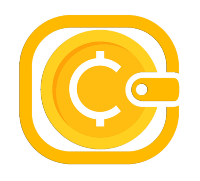The digital asset economy has experienced significant setbacks in the past year. It has been plagued by increasing interest rates, regulatory actions, financial insolvencies, and instances of fraud. Even the world’s second-largest stablecoin, USDC, has not been immune to these forces. The total circulating supply of USDC has declined from approximately $45 billion to about $25 billion by the conclusion of November 2023. The rise in interest rates in conventional markets has elevated the opportunity costs associated with holding USDC, as holders do not accrue interest on their holdings.
Growth in USDC Wallets
Despite the challenges faced by the digital asset economy, the number of USDC wallets with a balance of at least $10 has grown significantly. In the last year alone, there has been a 59% increase in the number of USDC wallets, which now exceeds 2.7 million. This growth is indicative of the resilience and appeal of USDC as a stablecoin.
According to a report titled “State of the USDC Economy” by Circle, the issuer of USDC, the stablecoin has played a vital role in settling over $12 trillion in blockchain transactions since its introduction in 2018. The report also highlights that USDC facilitated more than $197 billion in transfers between the traditional banking system and blockchain networks in 2023. This feat was accomplished through the minting and redeeming of USDC. Additionally, the report reveals that USDC facilitated 595 million transactions from January through November 2023, demonstrating its widespread use and adoption despite the challenges faced by the digital asset economy.
Circle’s Cross-Chain Transfer Protocol
Circle introduced the Cross-Chain Transfer Protocol (CCTP) in April 2023. This protocol has already made a significant impact by conducting 66,500 transactions. Its primary goal is to reduce friction, improve safety and security, and ultimately reduce costs when transferring USDC across different blockchains. The introduction of CCTP further highlights Circle’s commitment to innovation and addressing the challenges faced by the digital asset economy.
In a statement, Jeremy Allaire, Co-founder and CEO of Circle, expressed optimism about the future of USDC. He emphasized the growing regulatory clarity for stablecoins across major financial market centers and the increasing adoption of this technology by mainstream financial institutions, fintechs, internet firms, and enterprises. Allaire believes that USDC is poised to play a central role in the new internet financial system.
While the USDC economy has experienced growth and success, it also faced significant challenges. The de-pegging of USDC occurred following the failure of Silicon Valley Bank (SVB). Circle had substantial reserves tied up with SVB, and its failure posed a threat to the stability of USDC. However, USDC managed to restore its peg following the Federal Reserve’s action to compensate depositors affected by the failures of several banks. This recovery highlights the resilience and adaptability of USDC in the face of adversity.
Path to Becoming a Publicly Traded Company
The entity behind USDC has recently submitted confidential paperwork for an initial public offering (IPO) in the United States. This move aims to transform the entity into a publicly traded company. The IPO will proceed upon completion of the review process by the Securities and Exchange Commission (SEC), subject to market conditions and other considerations. This development signifies the growing maturity and recognition of USDC as a significant player in the digital asset economy.
The USDC economy has weathered various challenges in recent times. Despite the shrinking digital asset economy, USDC has experienced growth in terms of the number of wallets and its significance in facilitating blockchain transactions. Circle’s introduction of the Cross-Chain Transfer Protocol has enhanced the usability and efficiency of USDC across different blockchain networks. The de-pegging incident and subsequent recovery demonstrated the stability and resilience of USDC. Moreover, the entity behind USDC taking steps towards becoming a publicly traded company signifies the increasing recognition and potential of USDC in the evolving digital asset landscape.
















Leave a Reply